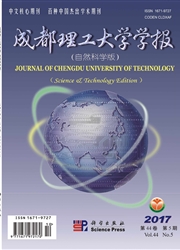

 中文摘要:
中文摘要:
海拉尔盆地乌尔逊凹陷经历了多期建造和改造。从分析乌尔逊凹陷建造和改造过程中的断裂变形特征入手,通过地震剖面的解释,按断裂活动期次将乌尔逊凹陷反向断层分为:早晚期、早中晚期、早中期、晚期、中晚期、中期6种类型。通过目的层的反向断层平面分布特征和油气勘探成果分析,认为乌尔逊凹陷的反向断层,尤其是早中晚期型反向断层控制了油气运移与聚集;反向断层的上升盘所形成的圈闭最有利于捕获油气,可作为重点勘探目标。
 英文摘要:
英文摘要:
The Wuerxun depression has experienced multi-period formations and reconstructions. The article analyses the characteristics of the fault deformation of the Wuerxun depression in the process of formation and reconstruction. Through the interpretation of the seismic profiles, according to the stages of the fault activities, the antithetic fault of the Wuerxun depression is divided into early-late period, early-middle-late period, early-middle period, late period, middle-late period and middle period. The analyses of the plane distribution characteristics of the antithetic fault and the hydrocarbon exploration achievements of the target stratum suggest that the antithetic fault of the Wuerxun depression controls hydrocarbon migration and accumulation and that the trap forming at the upside of the antithetic fault is most favorable for capturing oil and gas and can be used as the key target for exploration at the next step.
 同期刊论文项目
同期刊论文项目
 同项目期刊论文
同项目期刊论文
 期刊信息
期刊信息
